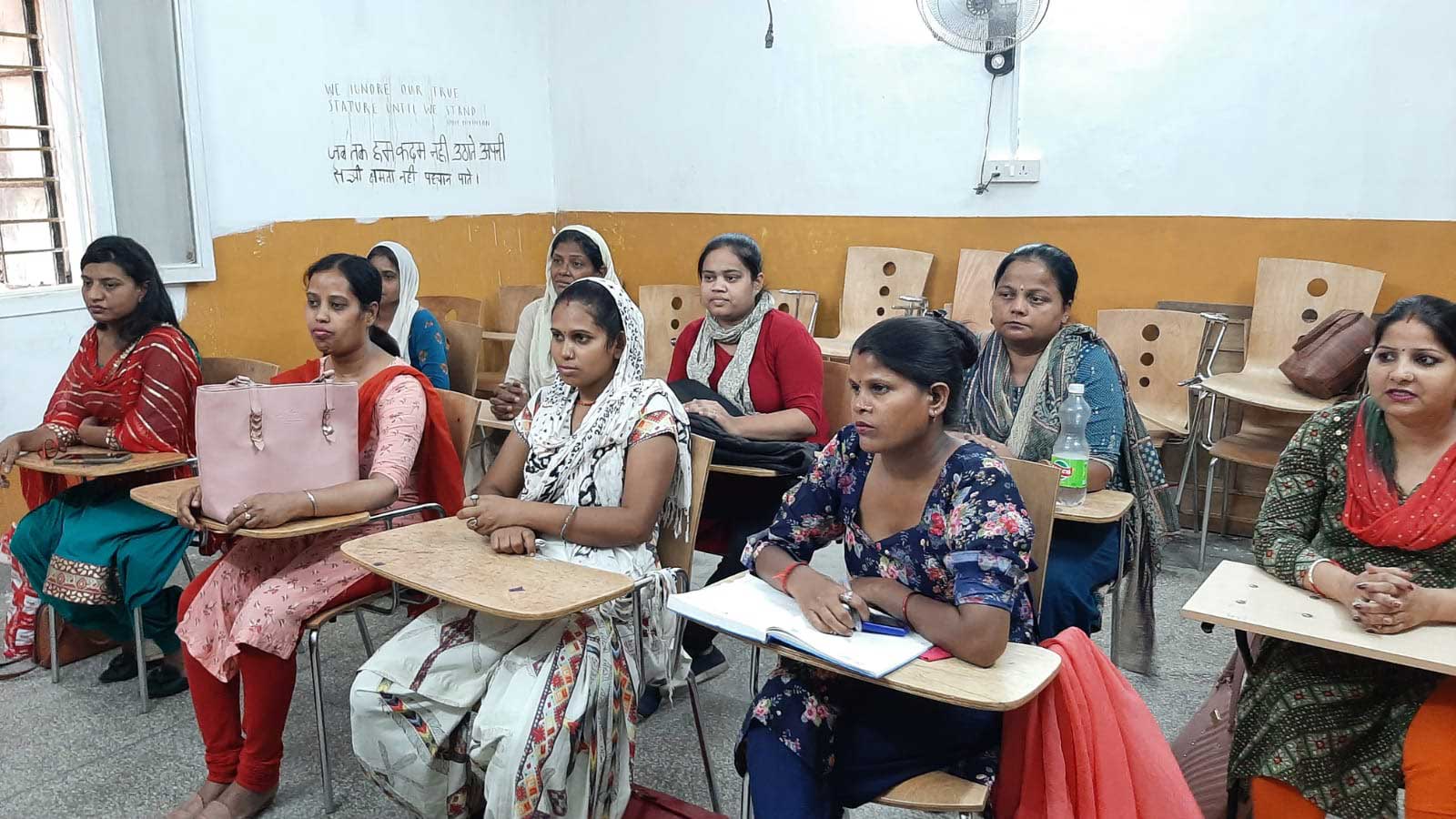
Family Strengthening
Mukul, 47, is a single father living in New Delhi, India. He has been the sole provider for his daughter since his wife passed. His daughter was just 8 years old at the time. Mukul wants nothing more than to provide her with a stable home and future, but he’s had a hard time finding steady work. Facing an unemployment rate of about 9% in India’s cities, Mukul has found himself juggling low-paying jobs on and off.

Then in May 2022, Mukul and his daughter’s lives changed for the better when Mukul enrolled in a professional job skills training and placement program through a local Holt partner. The training is part of a larger effort to help strengthen families at risk of separation in some of Delhi’s most impoverished slum communities, and is supported by Holt sponsors and donors. Called the “KARE” program — short for “Kinship Care and Relational Engagement” — this family strengthening effort focuses on keeping children ages 5-15 out of institutional settings and in the care of their families. Many of them are led by single parents like Mukul. Other children live with extended family members in what is known as “kinship care.”
In 2022, Holt’s partner in Delhi came to an important realization about how to achieve the mission of the KARE program. It was clear that if caregivers are economically disempowered, they have no option for survival and end up being dependent on others for their livelihood.
With that in mind, our partner assessed the job market in New Delhi and decided to launch an intensive job skills training program to help parents and other caregivers earn a more stable income. We decided to focus on one high-demand skill — professional housekeeping. In the city of New Delhi, thousands of families are in search of good and well-trained housekeepers, but there has been no structured investment to train housekeepers professionally. It remains the most disorganized industry so far.
In New Delhi, thousands of families are in search of well-trained housekeepers, but there has been no structured investment to train housekeepers professionally— until now.
In May, our partner launched a housekeeping training program that will take place over 40 working days and conclude in early July. It enrolled 30 women as well as two brave men, including Mukul. In a country where social tradition continues to assign specific roles and responsibilities based on gender, Mukul’s decision to learn housekeeping underscores his commitment and love for his daughter. He will do anything to give her a better life.
The inclusion of men in the program is a classic example of gender nonconformity, as men are not supposed to participate in household work in Indian society.

To provide hands-on experience to its participants, the program is conducted at a dedicated training center, with six workstations set up for food preparation and cooking, a “dummy” apartment set up to teach household management skills, and a classroom where participants learn English and other non-technical skills. The instructors include a chef from the hotel industry, a housekeeping trainer with more than 15 years of experience and a certified English teacher. With the support of Holt sponsors and donors, childcare and a meal are provided for younger children while their parents study.
In addition to the housekeeping training, our partner is teaching four grandmothers in the KARE program how to be daycare providers. The women are learning how to manage a daycare center, care for children and provide meals, activities and other essentials. With the income they earn, they can better care for their grandchildren, whom they are raising on their own.
Once the training period is over, the program intends to:

For Mukul, the program holds the promise of a better life. Through professional training as a housekeeper, he hopes not only to find steady employment — but also to achieve the level of security he so desires for himself and his daughter. After the heartbreak of his past, the road ahead finally looks bright!
We're sorry no stories match the filters you've chosen. Please adjust your selection of filters.

Family Strengthening

Adoption

Orphans & Vulnerable Children

Family Strengthening

Family Strengthening

Family Strengthening

Family Strengthening

Family Strengthening

Adoption